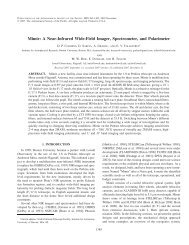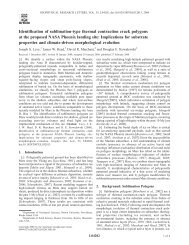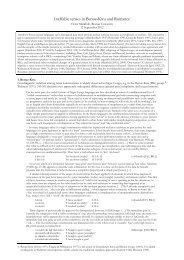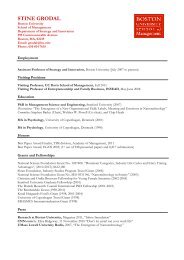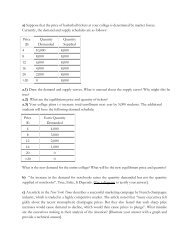Intertemporal Substitution and Recursive Smooth Ambiguity ...
Intertemporal Substitution and Recursive Smooth Ambiguity ...
Intertemporal Substitution and Recursive Smooth Ambiguity ...
Create successful ePaper yourself
Turn your PDF publications into a flip-book with our unique Google optimized e-Paper software.
epresentations under these two approaches give identical functional in the domain of adaptedconsumption processes. In addition, these two approaches give identical characterizations ofambiguity attitude in terms of the function v for fixed u or v ◦ u −1 .Unlike the second-order act approach in Section 3 or KMM (2005), the two-stage r<strong>and</strong>omizationapproach does not need to have a rich support of µ s tto establish that absoluteor comparative ambiguity aversion implies concavity or comparative concavity of v ◦ u −1 .The reason is that the presence of two-stage r<strong>and</strong>omization provides rich choices of lotteries,which allow us to use the st<strong>and</strong>ard analysis for objective risk.5. ApplicationWe use the representation in (3) to illustrate the application of our general model in finance.In that model, the decision maker does not observe a finite parameter z ∈ Z <strong>and</strong> hasambiguous beliefs about the possible consumption distributions π z indexed by z (P s t in (2)is a set indexed by z). We first derive the utility gradient (Duffie <strong>and</strong> Skiadas (1994)) forthe utility function defined in (3). The utility gradient is useful for solving an individual’soptimal consumption <strong>and</strong> investment problem. It is also useful for equilibrium asset pricing.We define the gradient of a utility function V 0 at c given z as the adapted process (ξ z t ) suchthat:V 0 (c + αδ) − V 0 (c)limα↓0 αLet V t denote V s t (c) in (3) <strong>and</strong> define[ ∞]∑= E ξt z δ t . (21)t=0R t (V t+1 ) = v −1 ( E µt v ◦ u −1 ( E πz,t u (V t+1 ) )) ,where we use µ t <strong>and</strong> π z,t to denote the posterior distribution µ s t<strong>and</strong> the conditional distributionπ z (·|s t ) , respectively.Proposition 7 Suppose W, u <strong>and</strong> v are differentiable. Then the utility gradient (ξ z t ) at cfor the generalized smooth ambiguity model is given by ξ z t = λ t E z tfor all t, whereE z tλ t = W 1 (c t , R t (V t+1 )) , (22)= Π t−1 W 2 (c s , R s (V s+1 )) v ′ ◦ u ( −1 E πz,s [u (V s+1 )] )s=0v ′ (R s (V s+1 )) u ( ′ u ( −1 E πz,s [u (V s+1 )] ))u′ (V s+1 ) , E0 z = 1. (23)This proposition demonstrates that under some regularity conditions, our generalizedrecursive smooth ambiguity model delivers a unique utility gradient, which is tractable for27



